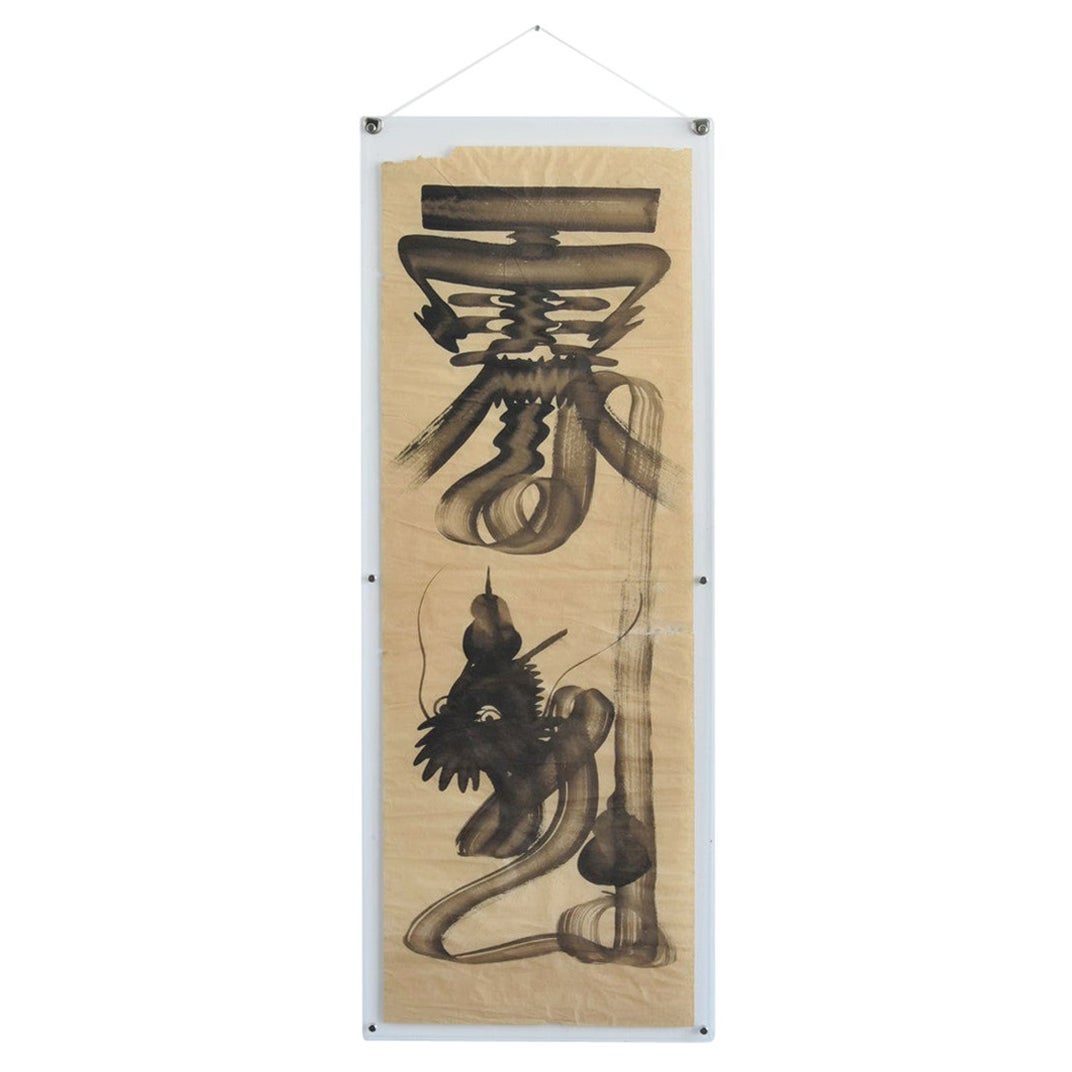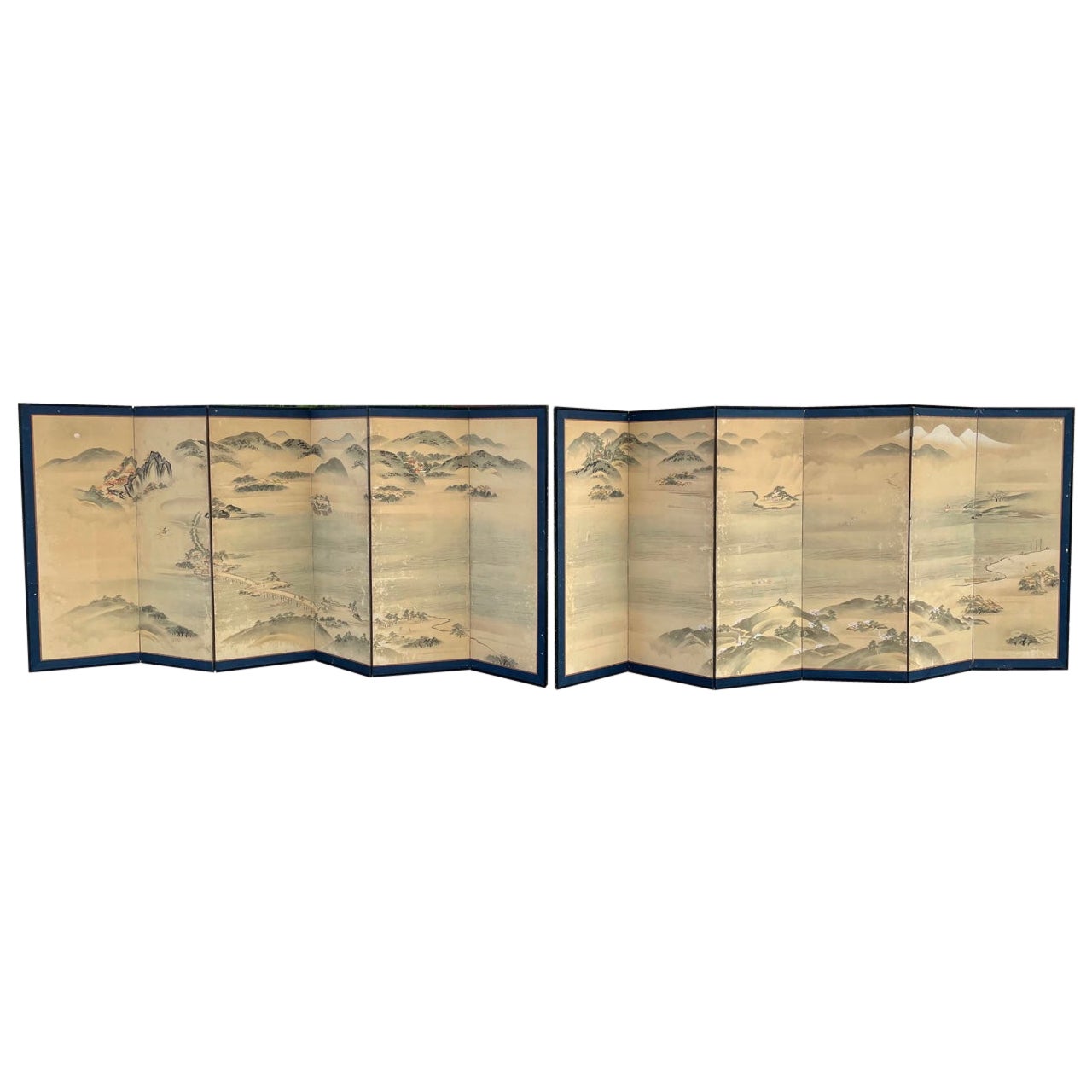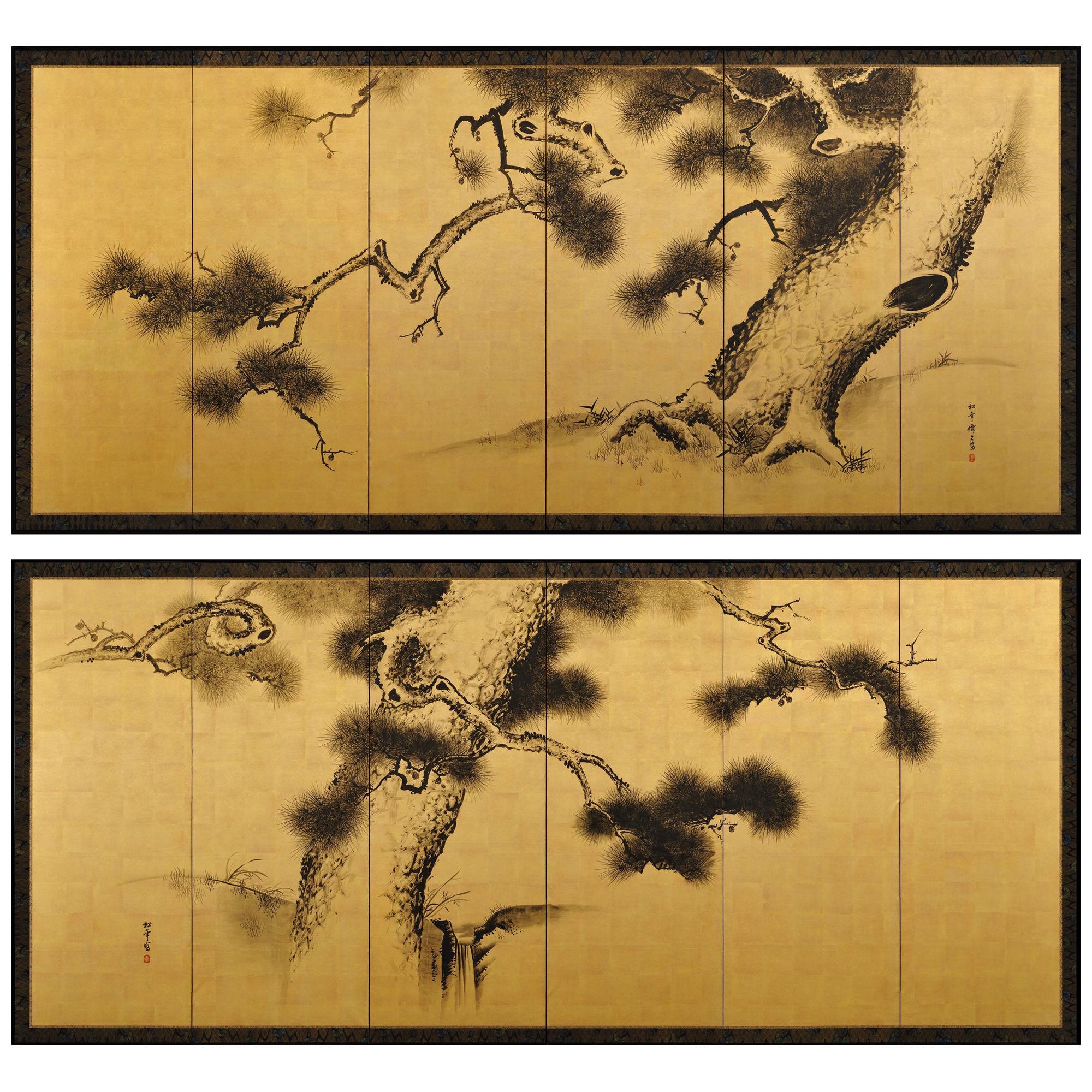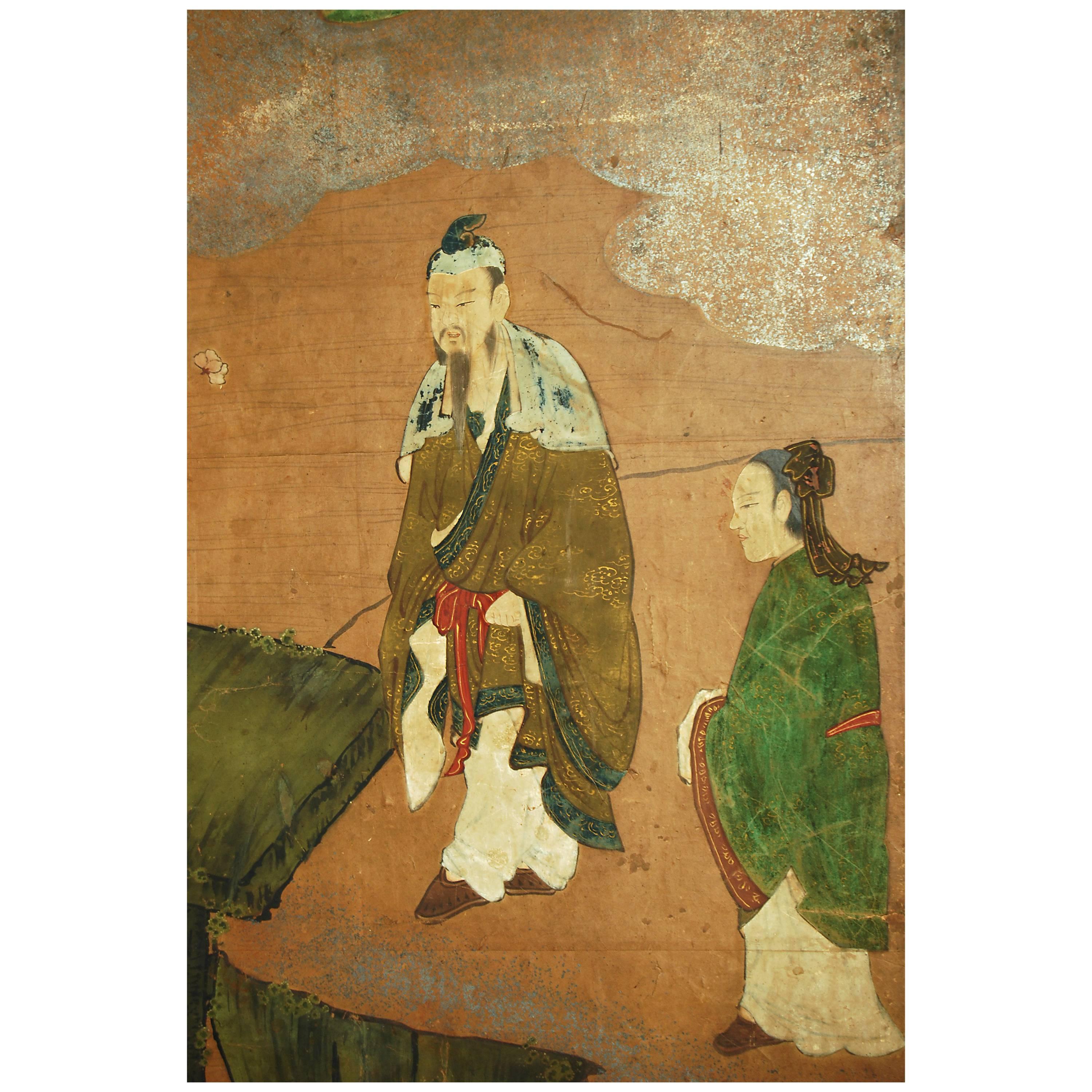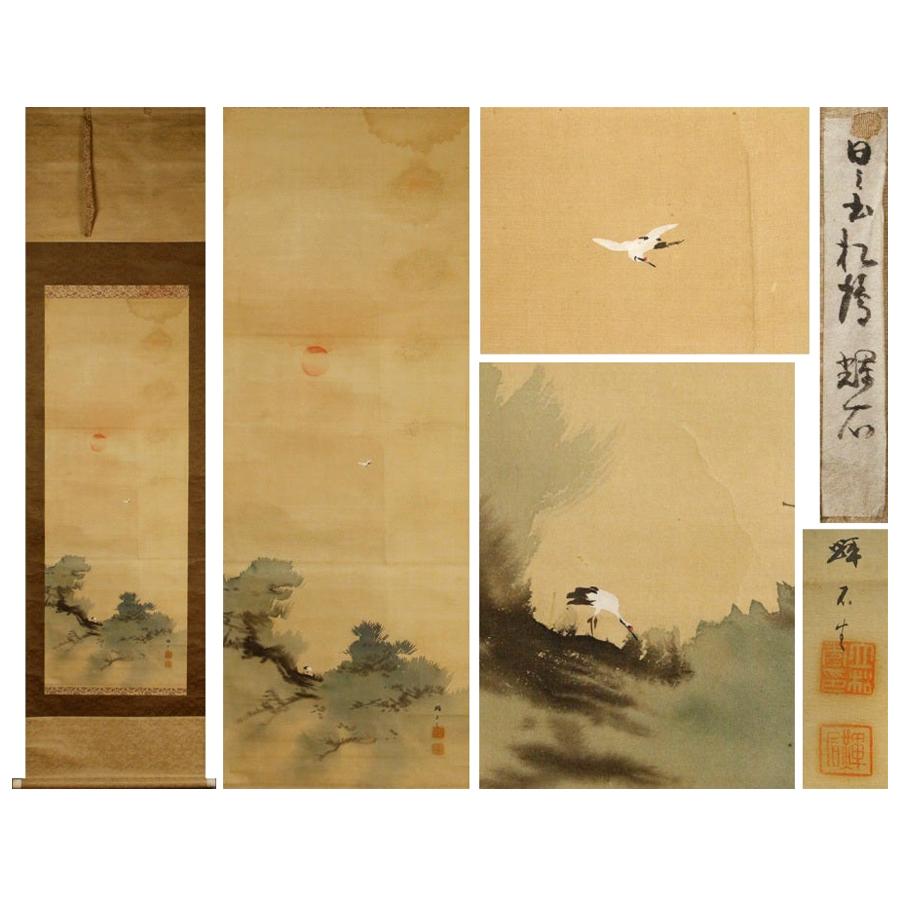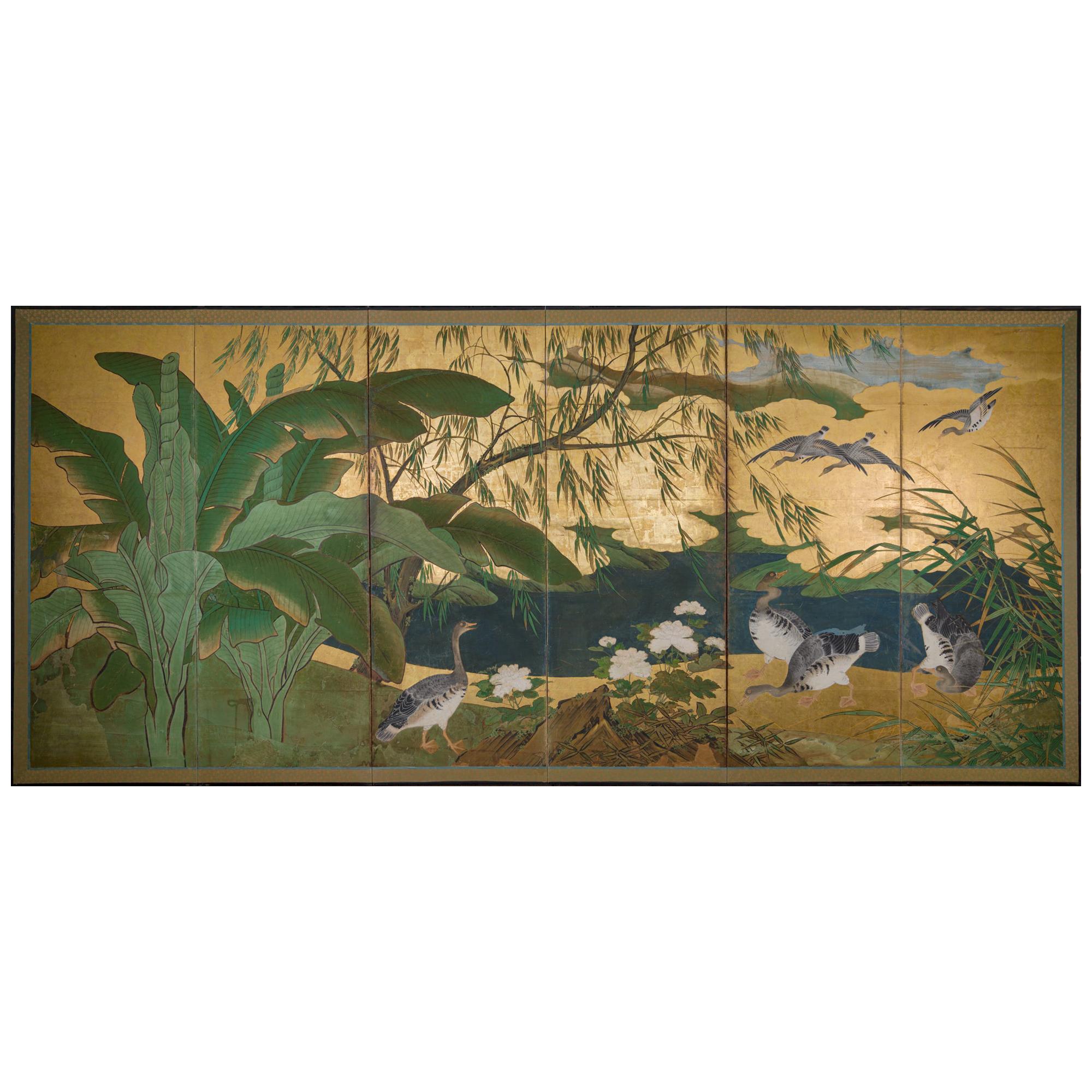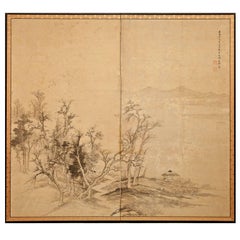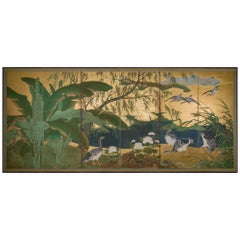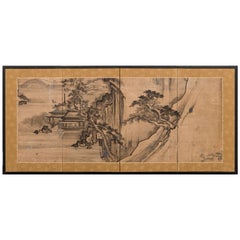
19th Century Japanese Screen: Ink Landscape Painting
View Similar Items
Want more images or videos?
Request additional images or videos from the seller
1 of 5
19th Century Japanese Screen: Ink Landscape Painting
About the Item
- Dimensions:Height: 28.5 in (72.39 cm)Width: 62 in (157.48 cm)Depth: 1.5 in (3.81 cm)
- Materials and Techniques:
- Place of Origin:
- Period:
- Date of Manufacture:19th century
- Condition:Condition report available upon request.
- Seller Location:Hudson, NY
- Reference Number:Seller: S10231stDibs: LU85514020033
About the Seller
5.0
Recognized Seller
These prestigious sellers are industry leaders and represent the highest echelon for item quality and design.
Established in 1971
1stDibs seller since 2008
149 sales on 1stDibs
Typical response time: 8 hours
Associations
The Art and Antique Dealers League of AmericaAntiques Associations Members
More From This SellerView All
- Japanese Two-Panel Screen: Ink Landscape on SilkBy ShunyuLocated in Hudson, NYJapanese Two Panel Screen: Ink Landscape on Silk, Meiji period (1868 - 1912) painting of a man riding a mule on a pathway through the Kurotani mountains with a thatched roof shelter ...Category
Antique 19th Century Japanese Meiji Paintings and Screens
MaterialsSilk, Wood
- Early 19th Century Japanese Six-Panel Screen, Tropical GardenLocated in Hudson, NYWith a banana leaf palm on the left, at water's edge with geese. Perhaps a scene from the southern islands. Mineral pigments on mulberry paper with gold leaf and a silk brocade border.Category
Antique Early 19th Century Japanese Paintings and Screens
MaterialsGold Leaf
- Japanese Two Panel Screen, Ink Landscape on Paper with Gold DustLocated in Hudson, NYSesshu-style painting in ink on mulberry paper with gold dust accents and a silk brocade border.Category
Antique 19th Century Japanese Paintings and Screens
MaterialsGold
- Japanese Six Panel Screen: Ink Painting of a Weathered Pine TreeLocated in Hudson, NYMeiji period (1868 - 1912) sumi-e (or ink painting) on paper of a venerable pine tree with limbs stretching out over a bluff. Beautiful signature and seal read: Biei. Ink on paper ...Category
Antique 19th Century Japanese Paintings and Screens
MaterialsBrocade, Silk, Paper
- 19th Century Japanese Six Panel Screen: Silver Moon Rising Over Summer FieldLocated in Hudson, NYJapanese Six Panel Screen: Silver Moon Rising Over Summer Field. Rimpa Style painting of a moon rising over summer flowers and grasses, including cockscomb and blue bellflowers. Pa...Category
Antique Late 19th Century Japanese Meiji Paintings and Screens
MaterialsGold Leaf
- Japanese Two-Panel Screen Ink Painting of Palm Trees on PaperLocated in Hudson, NYJapanese two-panel screen: ink painting of Palm Trees on paper, Edo period (1787) beautiful painting of Japanese windmill palm trees. Ink paint...Category
Antique 18th Century Japanese Edo Paintings and Screens
MaterialsPaper, Silk, Wood
You May Also Like
- Japanese Antique Ink Painting / 19th Century / Rare Chinese Character PaintingLocated in Sammu-shi, ChibaWe have a unique Japanese aesthetic sense. And only we can introduce unique items through our purchasing channels in Japan and the experience we have gained so far, in such a way that no one else can imitate. It is an ink painting written after the Meiji era. The biggest attraction of this work is that it uses Chinese characters to create paintings. To explain in detail, it is written here in Chinese characters as "un-ryu" . "Un" is a cloud and "ryu" is a dragon. These are embodied and drawn by comparing them to the meaning of Chinese characters. And the clouds depict the clouds hanging over the mountain, and the dragon depicts the climbing toward the mountain. Humorous paintings...Category
Antique Late 19th Century Japanese Edo Paintings
MaterialsAcrylic, Paper
- Japanese Folding Screen with a Spring Landscape, Kano School, 19th CenturyLocated in Milano, ITThe scene is dominated by a plum tree in bloom under which a couple of paradise birds is courting. The screen is crossed by a luxuriant creek, a typical feature of the springtime.Category
Antique 19th Century Japanese Paintings and Screens
MaterialsPaper
- 19th Century Japanese Edo Six Panel Kano School Landscape ScreenLocated in Rio Vista, CALate Edo period 19th century Japanese six-panel landscape screen featuring a cypress tree over a flowering hibiscus with a pair of hototogisu birds. Kano school painted with ink and ...Category
Antique 19th Century Japanese Edo Paintings and Screens
MaterialsSilk, Wood, Paper
- Pair of 19th Century Japanese ScreensLocated in Bagshot, GBA pair of large 19th century Japanses Screens of Japanese scenery. The screens also come with a wooden crate which would have been built for them at a later date in order to move ...Category
Antique 19th Century Asian Other Decorative Art
MaterialsPaper
$3,850 Sale Price / set20% Off - Japanese Screen Painting, Early 19th Century, Autumn Flowers by Sakai HoitsuLocated in Kyoto, JPA two-fold Japanese screen by the Rimpa school artist Sakai Hoitsu (1761-1828), Japan, 19th century, Edo period. This small Japanese folding screen pai...Category
Antique Early 19th Century Japanese Edo Paintings and Screens
MaterialsWood, Silk
- 19th Century Japanese Screen for Tea-Ceremony, Ink Bamboo and Plum on Gold LeafLocated in Kyoto, JPThree Friends of Winter Nakajima Raisho (1796-1871) Late Edo period, circa 1850 Ink and gold leaf on paper. This is a double-sided Japanese Furosaki or tea-ceremony screen from the mid 19th century; bamboo and plum on the front, young pines the back. It by Nakajima Raisho, a master painter of the Maruyama school in the late Edo and early Meiji periods. In this work Raisho combines exquisite ink brushwork with large open spaces of brilliant gold-leaf to inspire the viewers imagination. Rather than naturalism, he is searching for the phycological impression of the motifs, resulting in abstraction and stylization. His simplification of the motifs the result of looking to capture the inner nature of the objects. This art motif is known as Sho Chiku Bai, or the Three Friends of Winter. Evergreen pine connotes steadfastness, bamboo suggests both strength and flexibility, while plum blossoms unfurling on snow-laden branches imply hardiness. Combined, this trio is emblematic of Japanese new year. Chinese literati were the first to group the three plants together due to their noble characteristics. Like these resilient plants flowering so beautifully in winter, it was expected of the scholar-gentleman to cultivate a strong character with which he would be able to show the same degree of perseverance and steadfastness even during times of adverse conditions. The screen would have been placed near the hearth of a room used for the Japanese tea ceremony, shielding the fire from draughts and also forming a stimulating and decorative backdrop behind the tea utensils. It would have been used in the Hatsugama, or first tea-ceremony of the new year. Nakajima Raisho (1796-1871) originally studied under Watanabe Nangaku before entering the school of Maruyama Ozui. He was the highest ranking Maruyama school painter at the end of the Edo period and was known as one of the ‘Four Heian Families’ along with Kishi...Category
Antique Mid-19th Century Japanese Edo Paintings and Screens
MaterialsGold Leaf
Recently Viewed
View AllMore Ways To Browse
Four Panel Screen
Antique Panel Screen
Japan Ink Wood
Japanese Landscapes Screen And Paintings
Japanese Screens Four
Painted Antique Furniture Screen
19th Century Painted Panel Screens
Japan Antique Screens
Painted Four Panel Screen
Antique Silk Brocade
Antique Japanese Silk Paintings
Antique Japanese Silk Painting
Japanese Antique Silk Painting
Antique Japanese Seals
Japanese Four Panel
Antique Asian Paintings And Screen
Antique Asian Paintings And Screens
Antique Japanes Screens
